Break In The Frame PDF
The ‘Reactive Canvas’
This is a normal canvas as we know it since the 14th century combined with a smart phone or a tablet device with an Android OS. It may also have a power-bank and two loudspeakers build in the back of the canvas.
Ironically the device breaks in the back space of the wooden frame covered with a sheet of linen or cotton. The modern technique is wrapped by the old fashioned one.
The ‘Reactive Canvas’ is developed as a new input device and an enhancement of the paint-able canvas. It introduces some new features.
The ‘Reactive Canvas’ can emit sound of any kind, programmatic generated waveforms or recorded music-snippets, instruments, ambient sound or fragments of poems, speech, story lines. It is able to connect to the world via WIFI or Bluetooth.
Anyone can program the device with the normal developer tools. Beyond those technical specification a ‘Reactive Canvas’ is a playground for the mind. It has a static context and a dynamic one
– the canvas and the device. Both have it’s own limitations and other new ones, since they are connected now. I use a minimal adult playground with two canvases. That is the setting for exploration of the possibilities.
- A literal approach a fragmented poem and a visual hint like in ‘A History Of Two’
- generative music corresponding to the visual shape height of the tones may be modified and so the parallel hear-able tones square board advisory to follow. A kind of story puzzle visualizes the read-write problem
- do not ask me what you can do – hint: experiment and explore the options. do whatever you want!
The making of ‘A History Of Two’
This is a composition of two canvases in four coloured layers, a poem of loosely words and two connected devices with a special software to interpret the rotation movements. A position change is be guessed with measuring the linear acceleration metrics.
The fragment words of the poem:
A His Tory Her Story Off On One Two Three Four
The resulting sentence for the ‘right’ sequence should be “A-his-tory-off-two”, because this sounds like the title. But any other is way probably more interesting. Can you count to four?
So here is how the two canvases play works: The player can modify one canvas a time by the choices left or right only. Now the canvas emits a word. The rule sequence will change, too. The picture’s state does not correspond the words’ sequence heard or any specific word.
Left: ‘A History Of Two’ prototype sketch
Next pages:
all steps of the making of
‘The History Of Two’
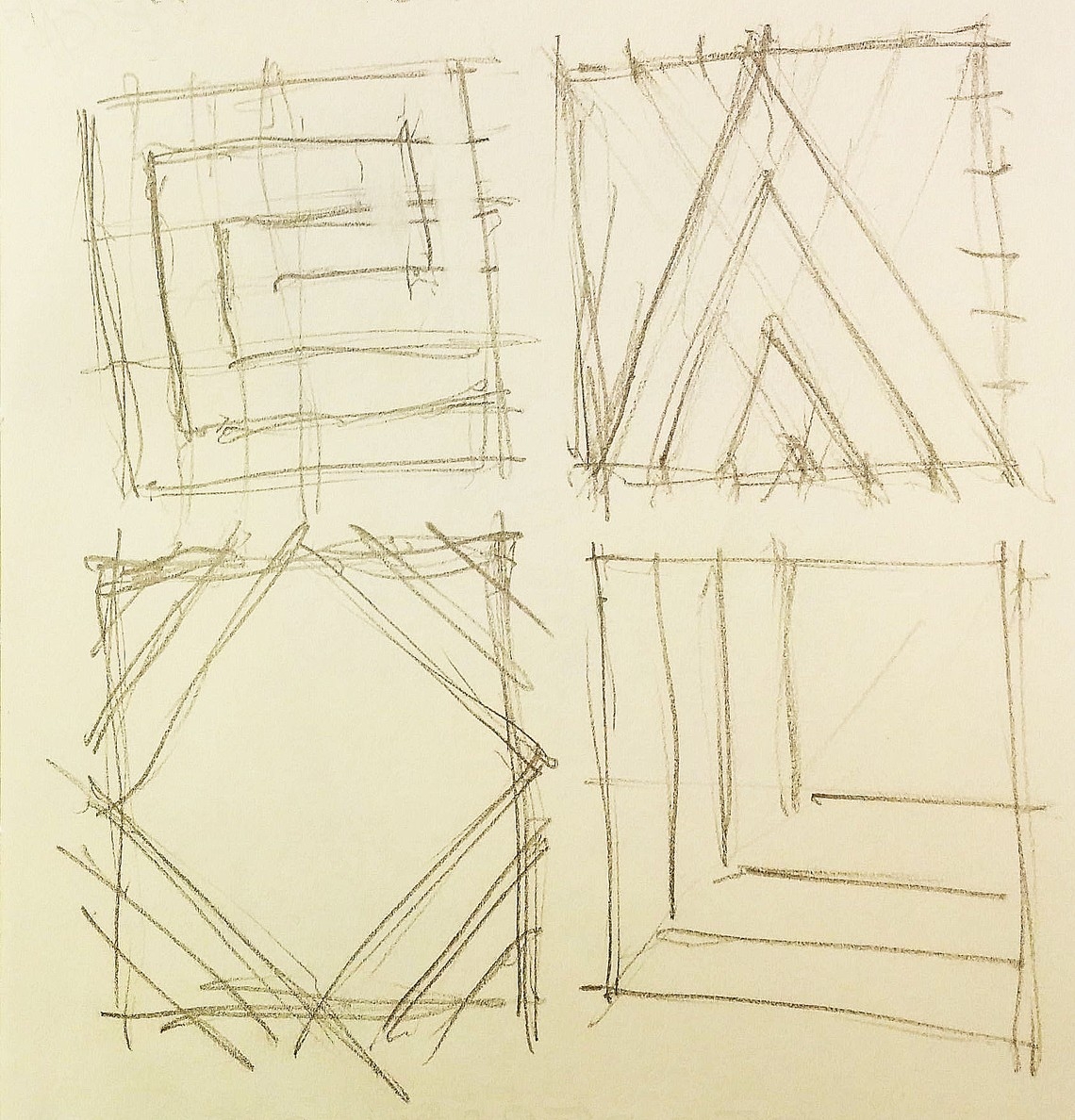
Painting the first layer L-shapes
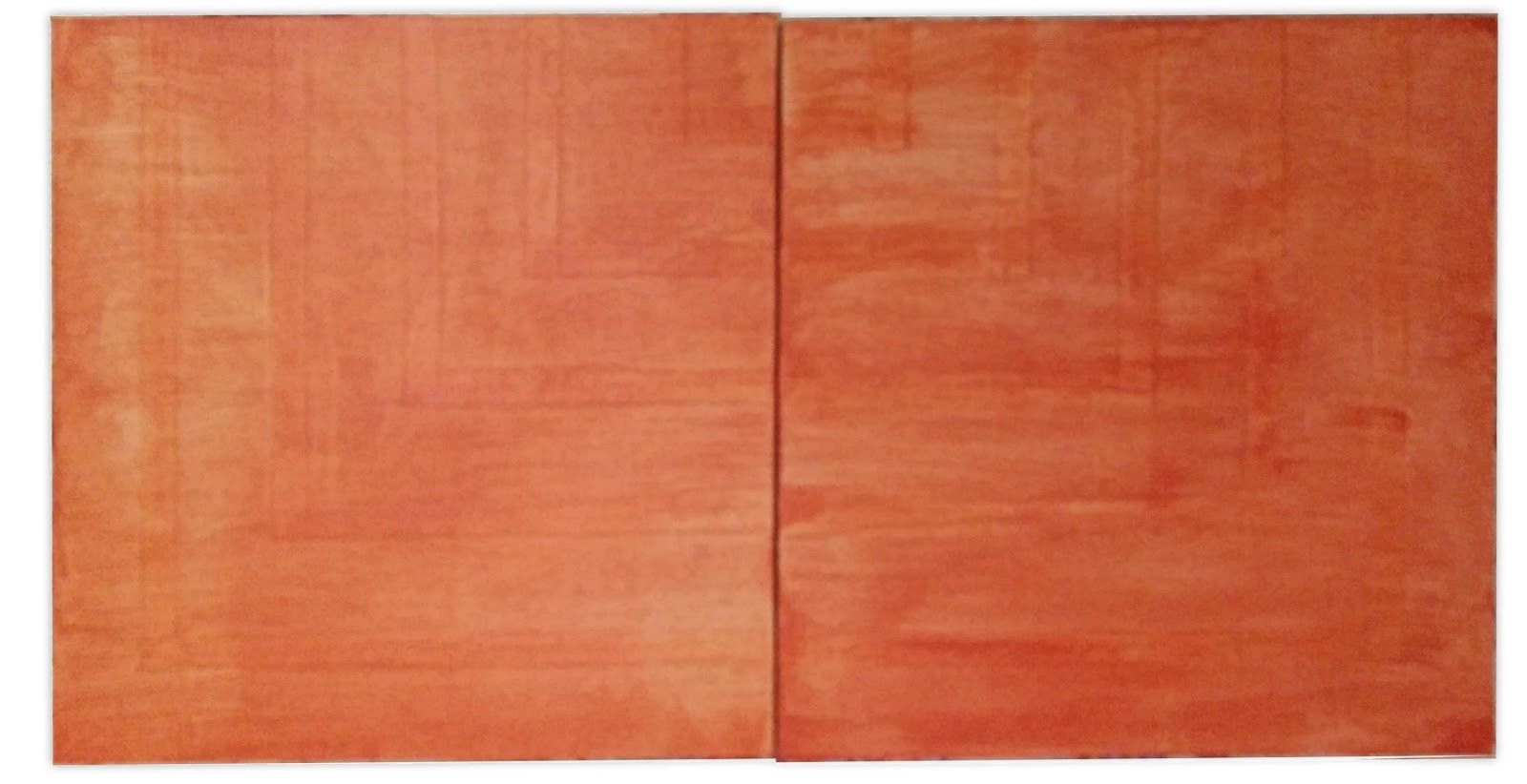
 The second layer O-shape
The second layer O-shape
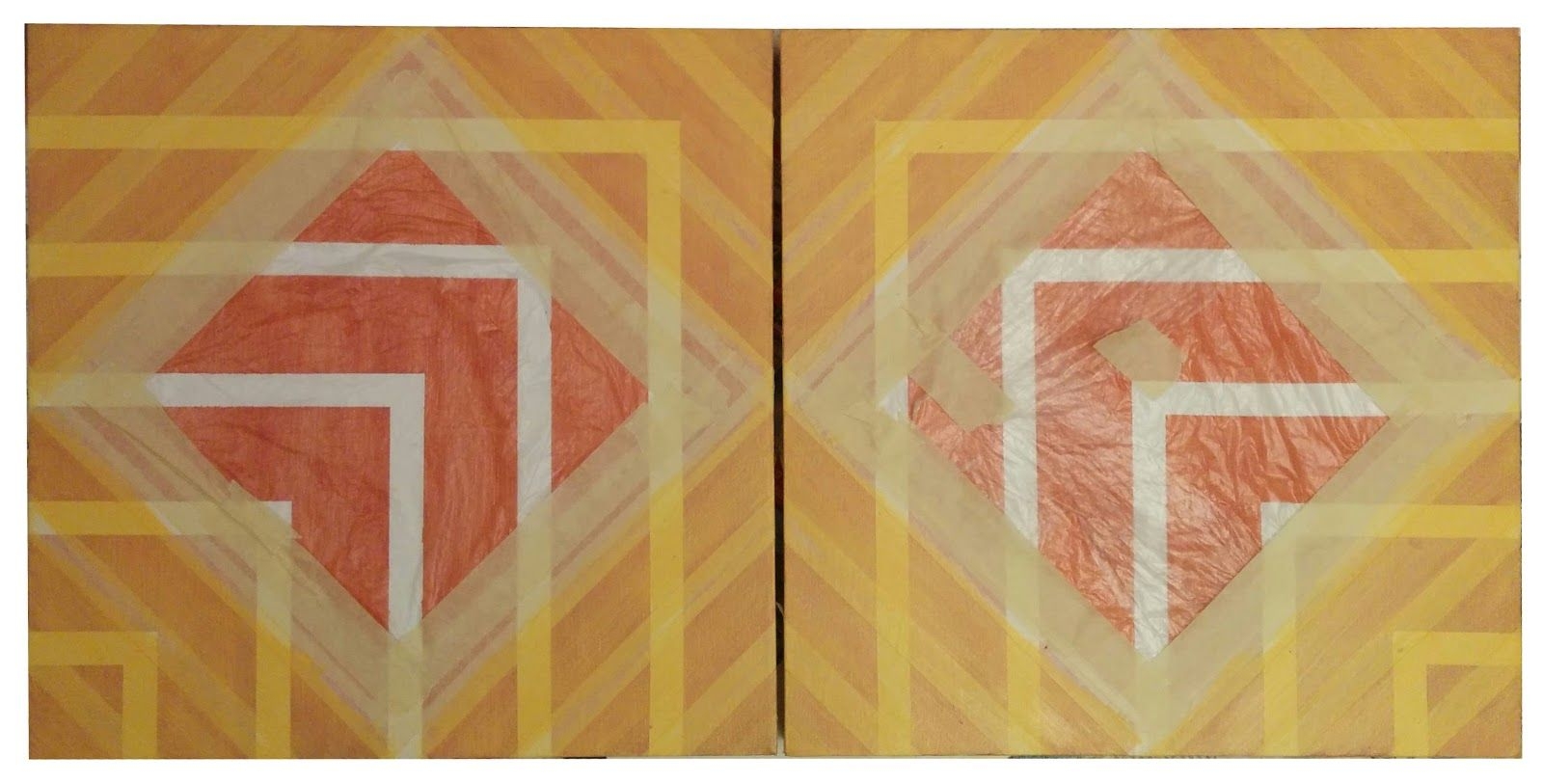
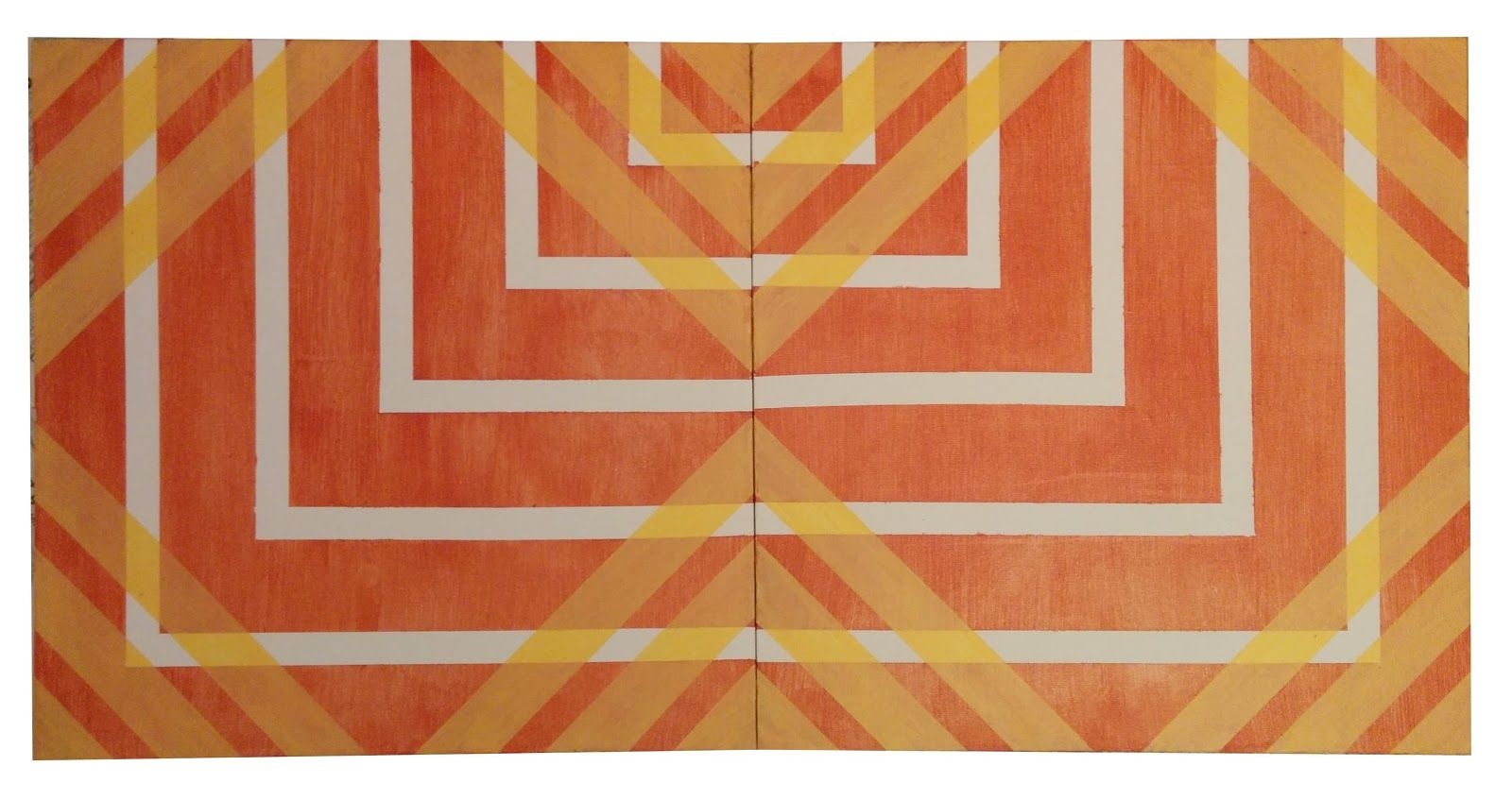 Preparing and painting the third layer V-shape
Preparing and painting the third layer V-shape

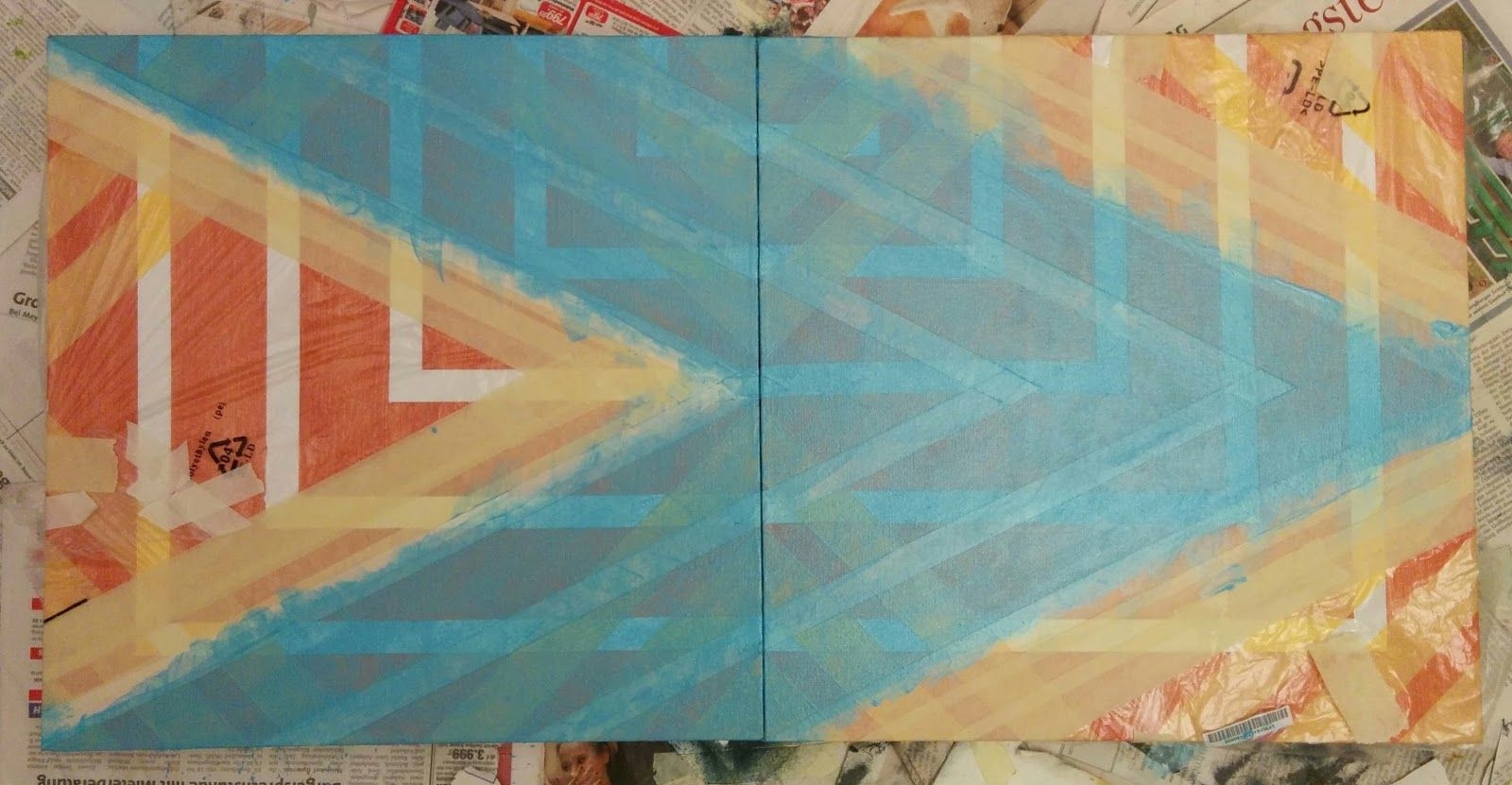
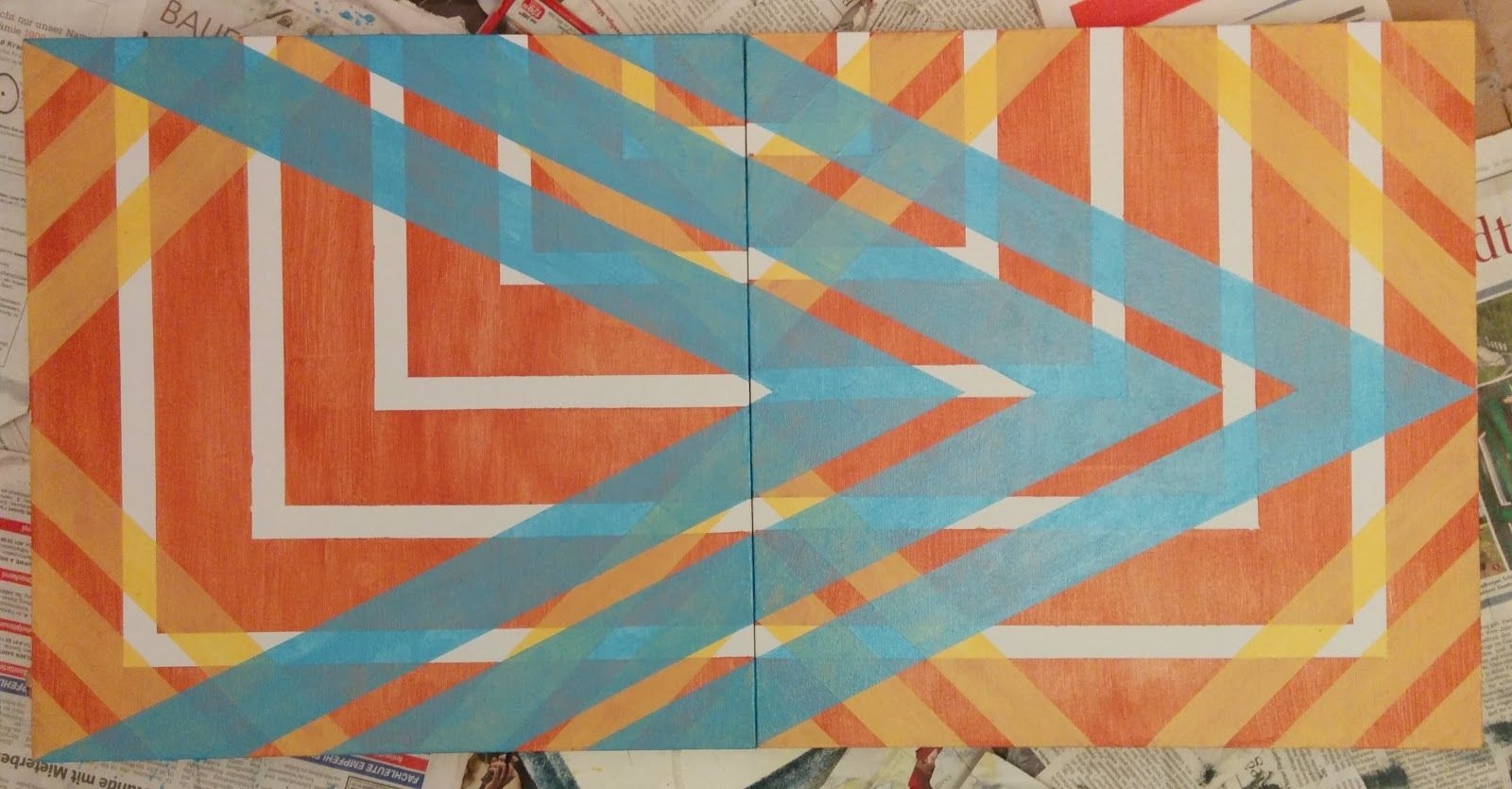
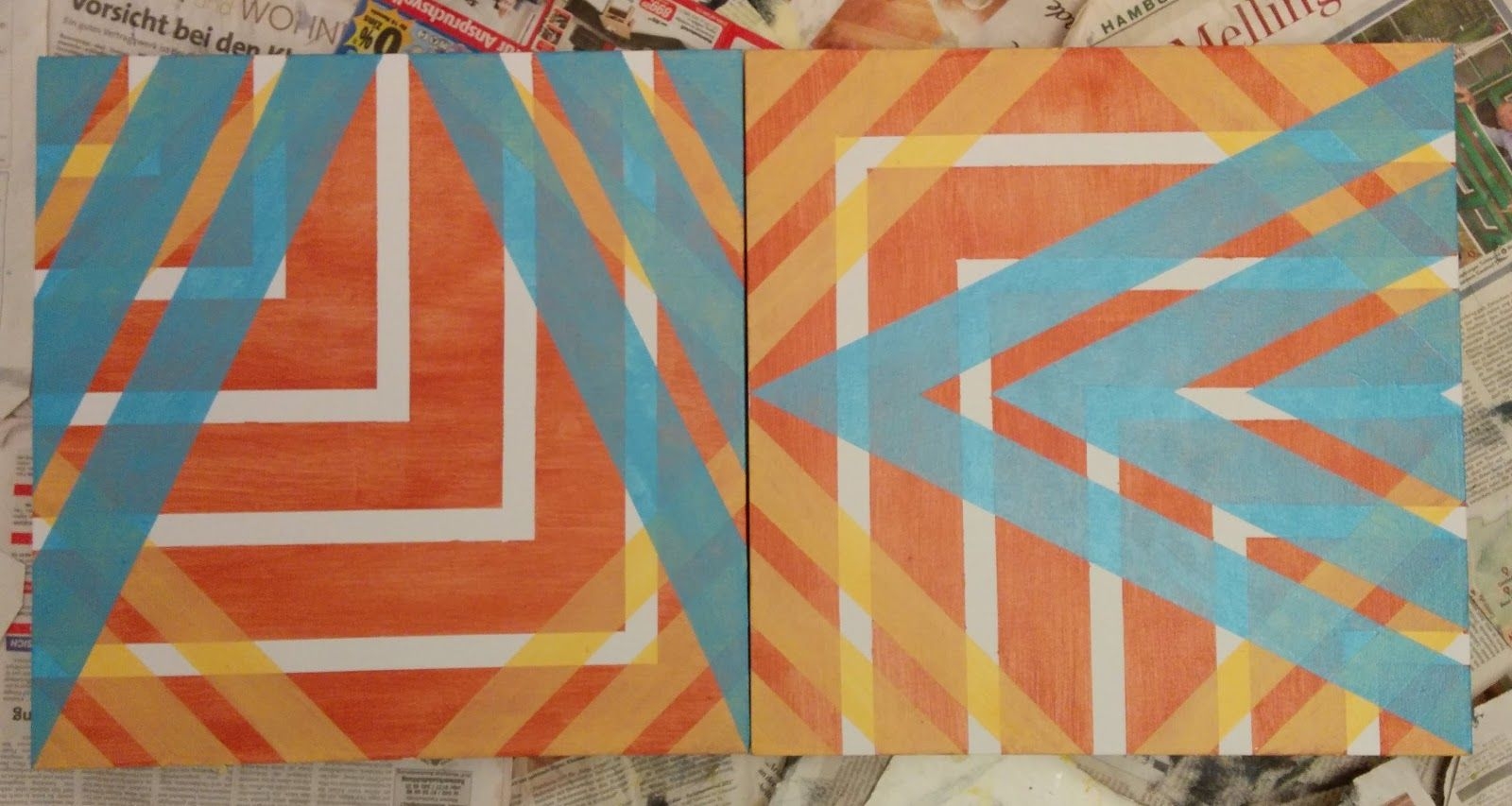 Beginning the final fourth layer
Beginning the final fourth layer
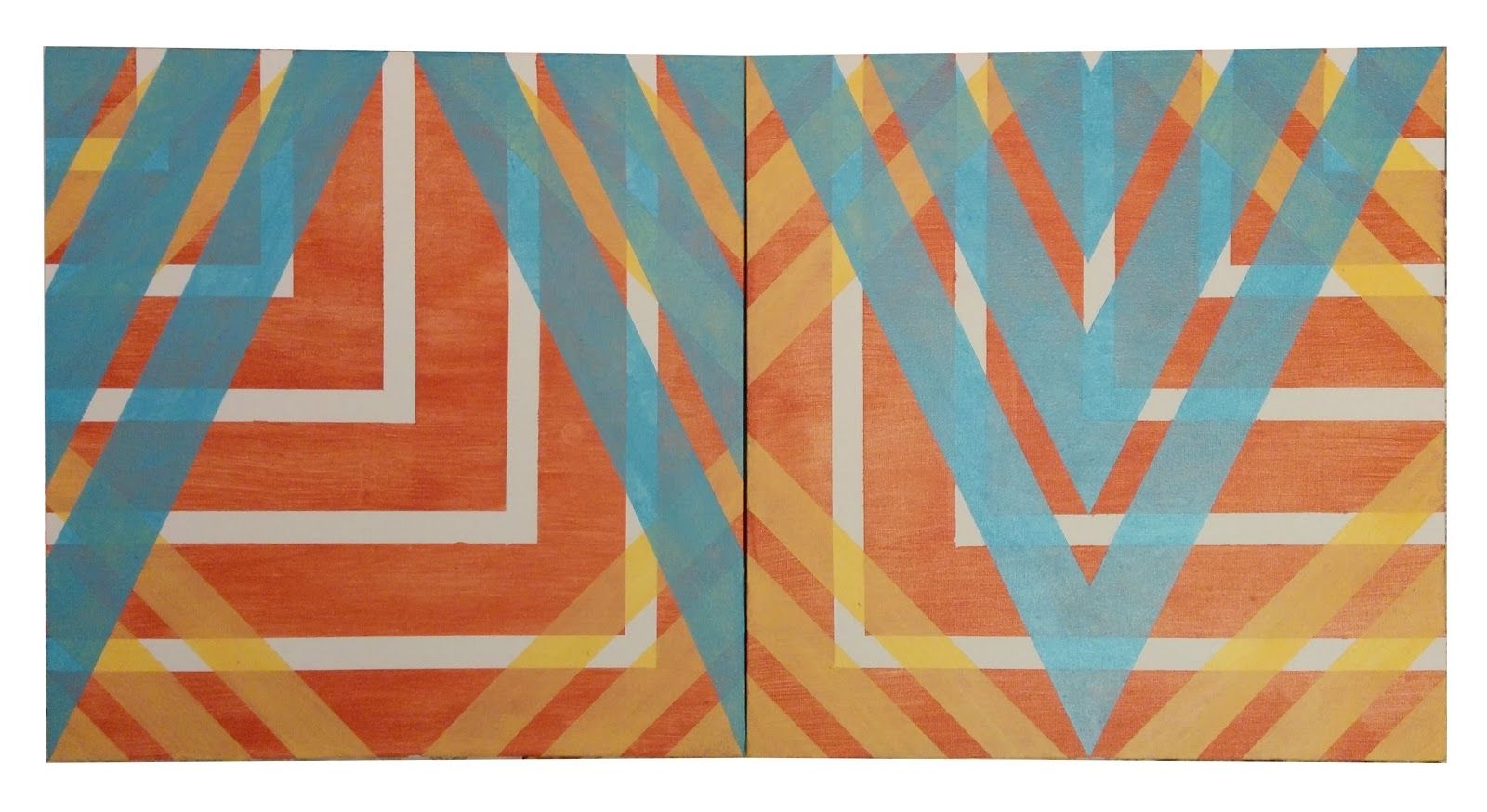
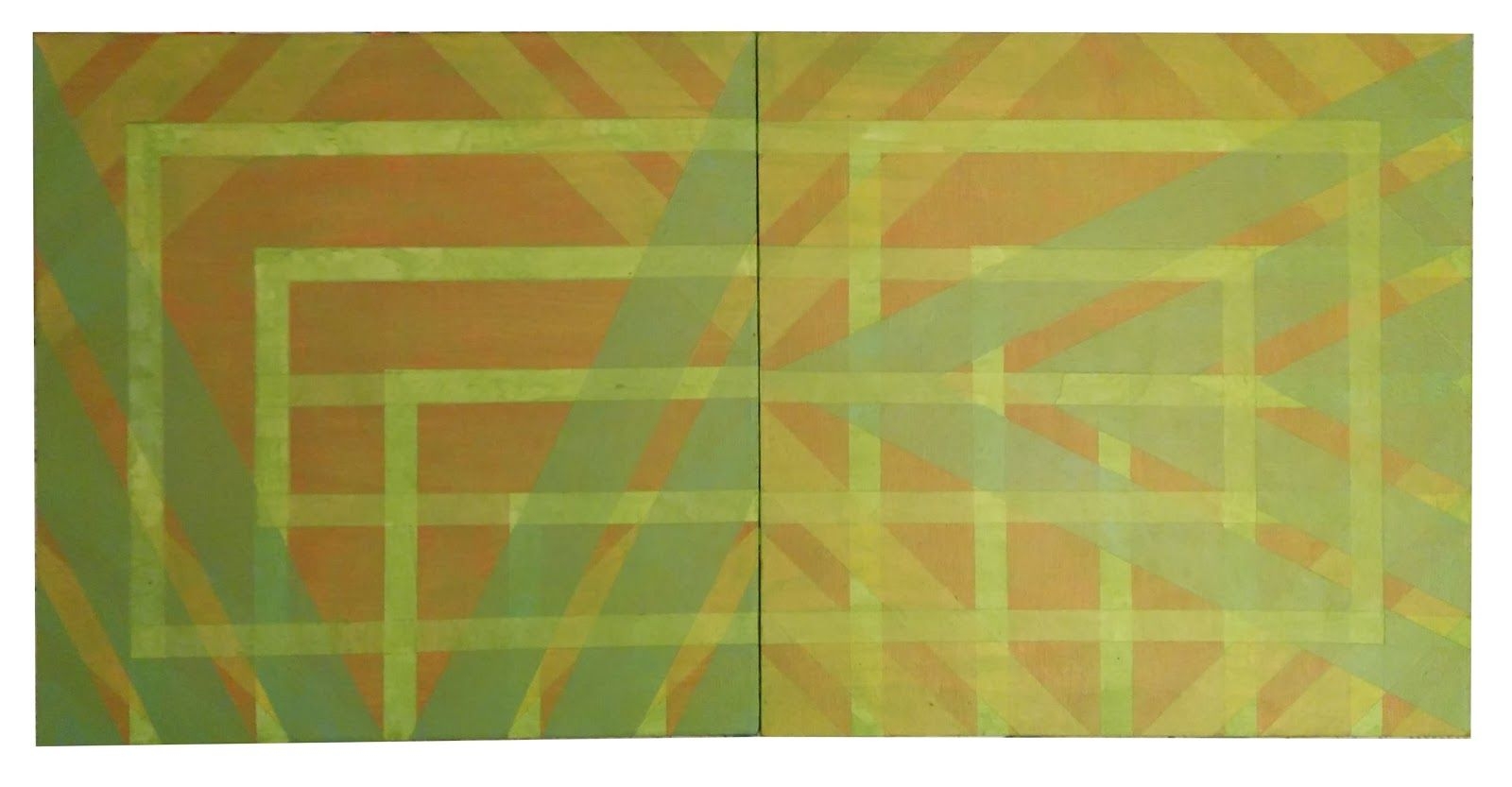 Final image: position state
Final image: position state
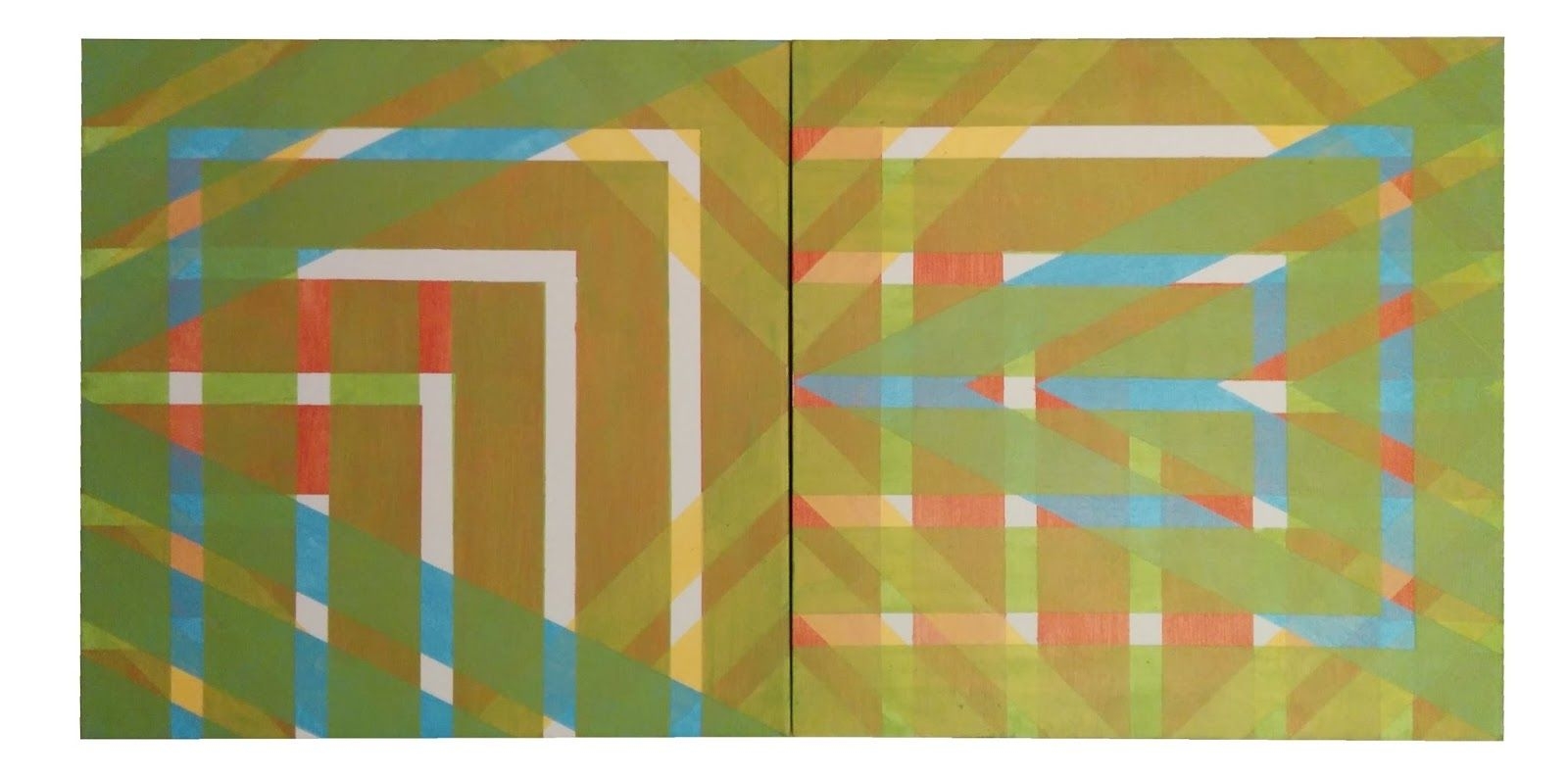
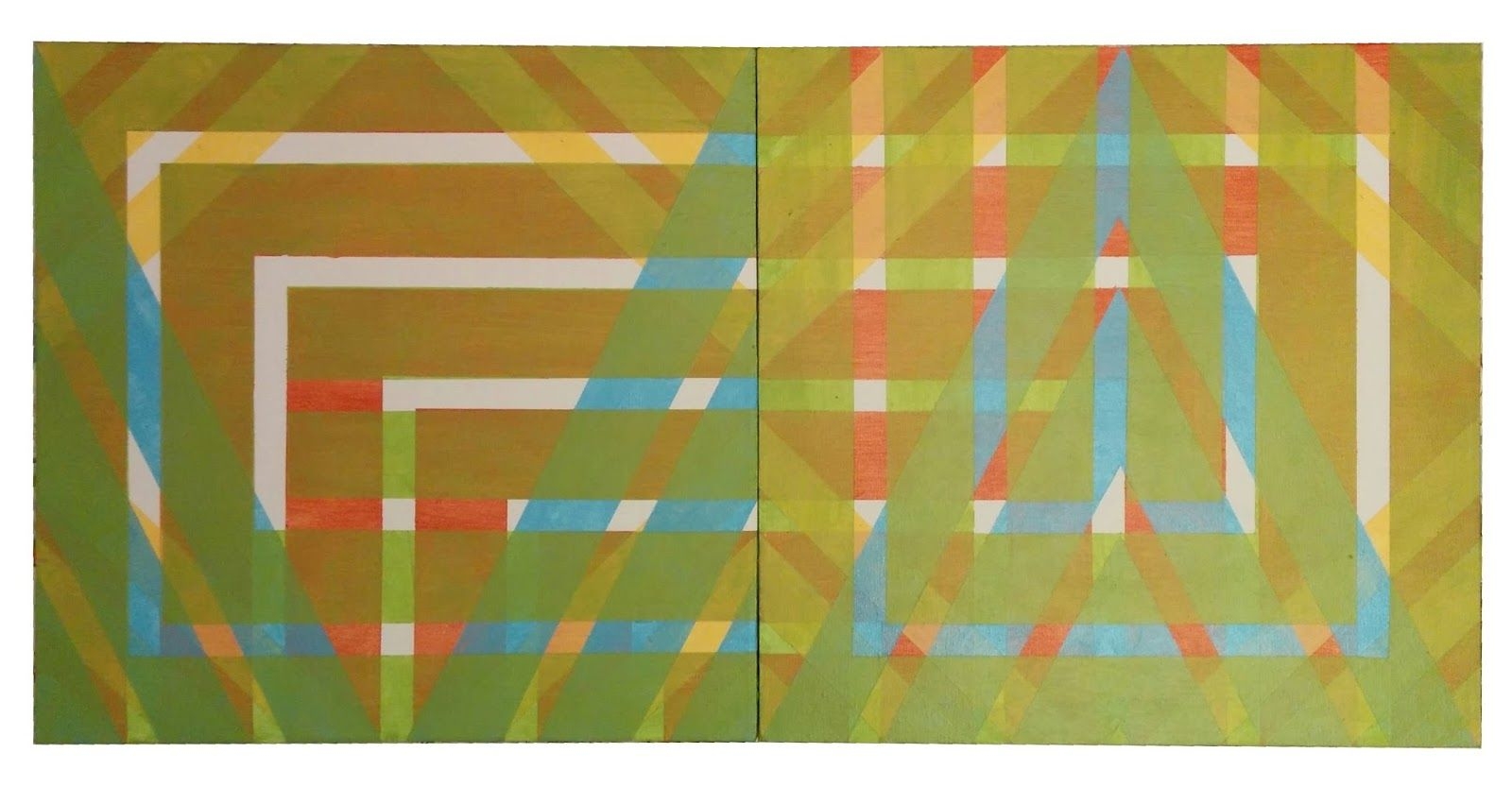
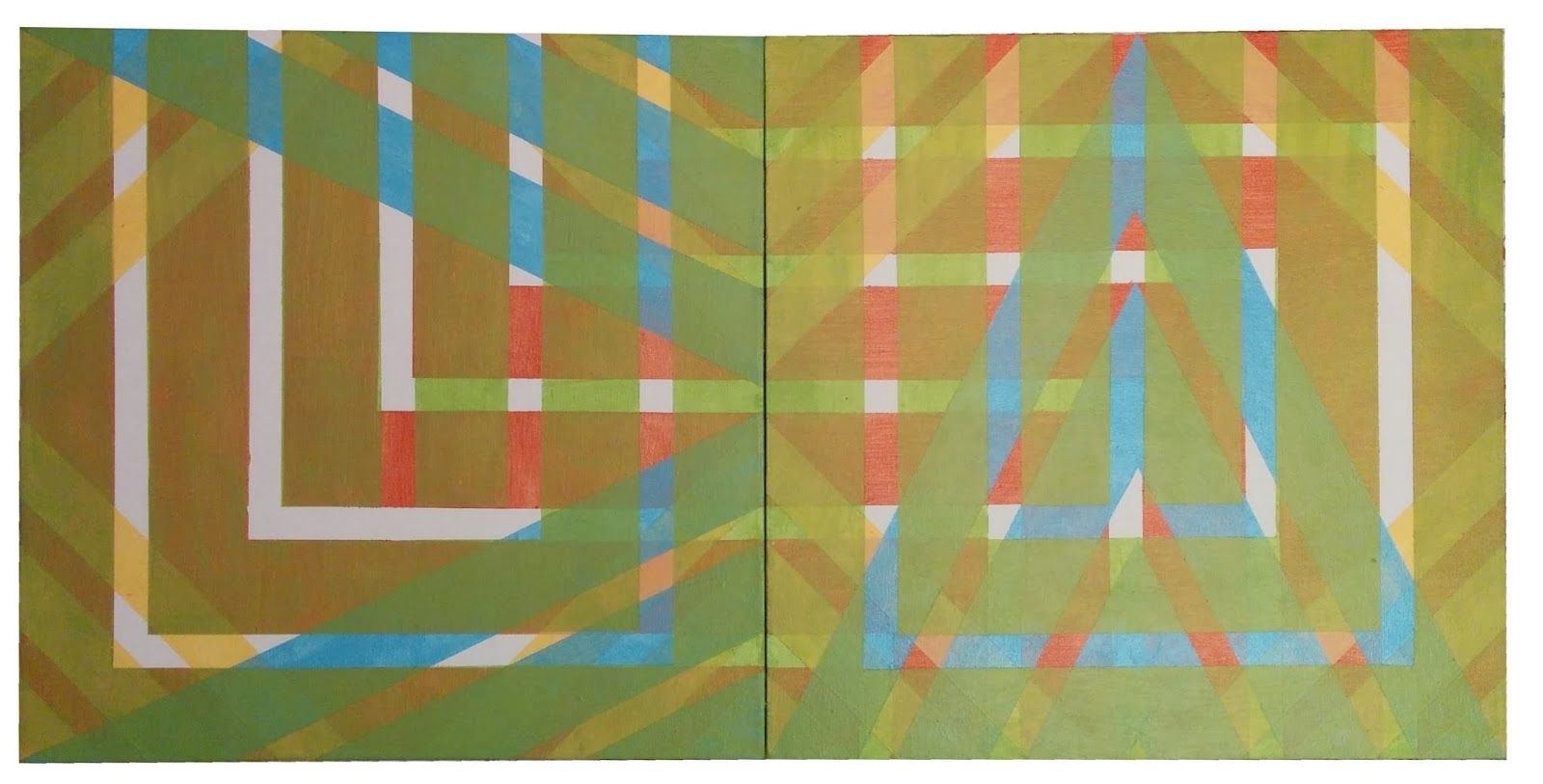
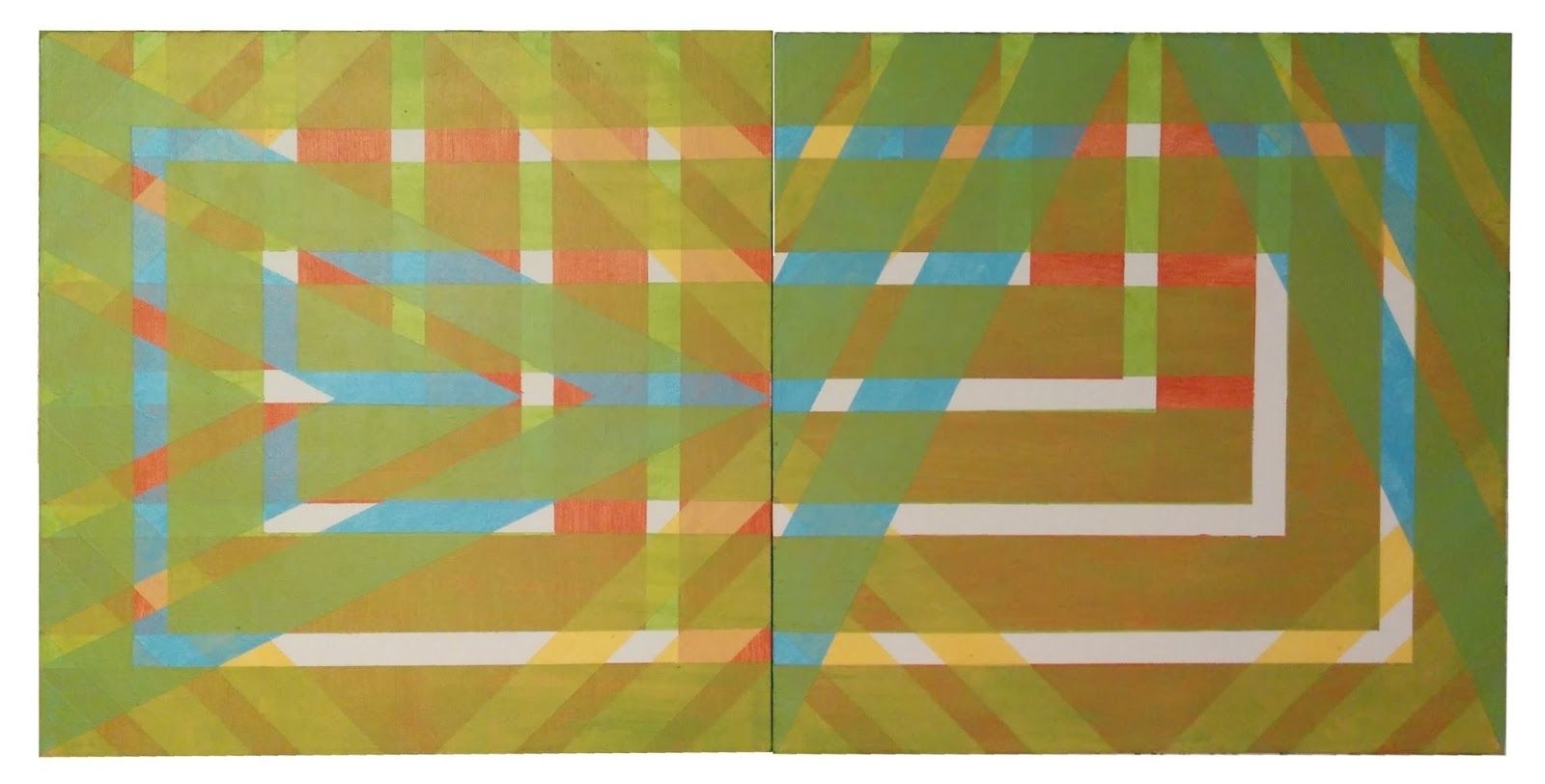
Break the Frame centers on a reactive canvas, one which enables me to create an alternative control scheme and subsequent interactions.
Break In The Frame
Creating a synaesthetic experimental art and game project.
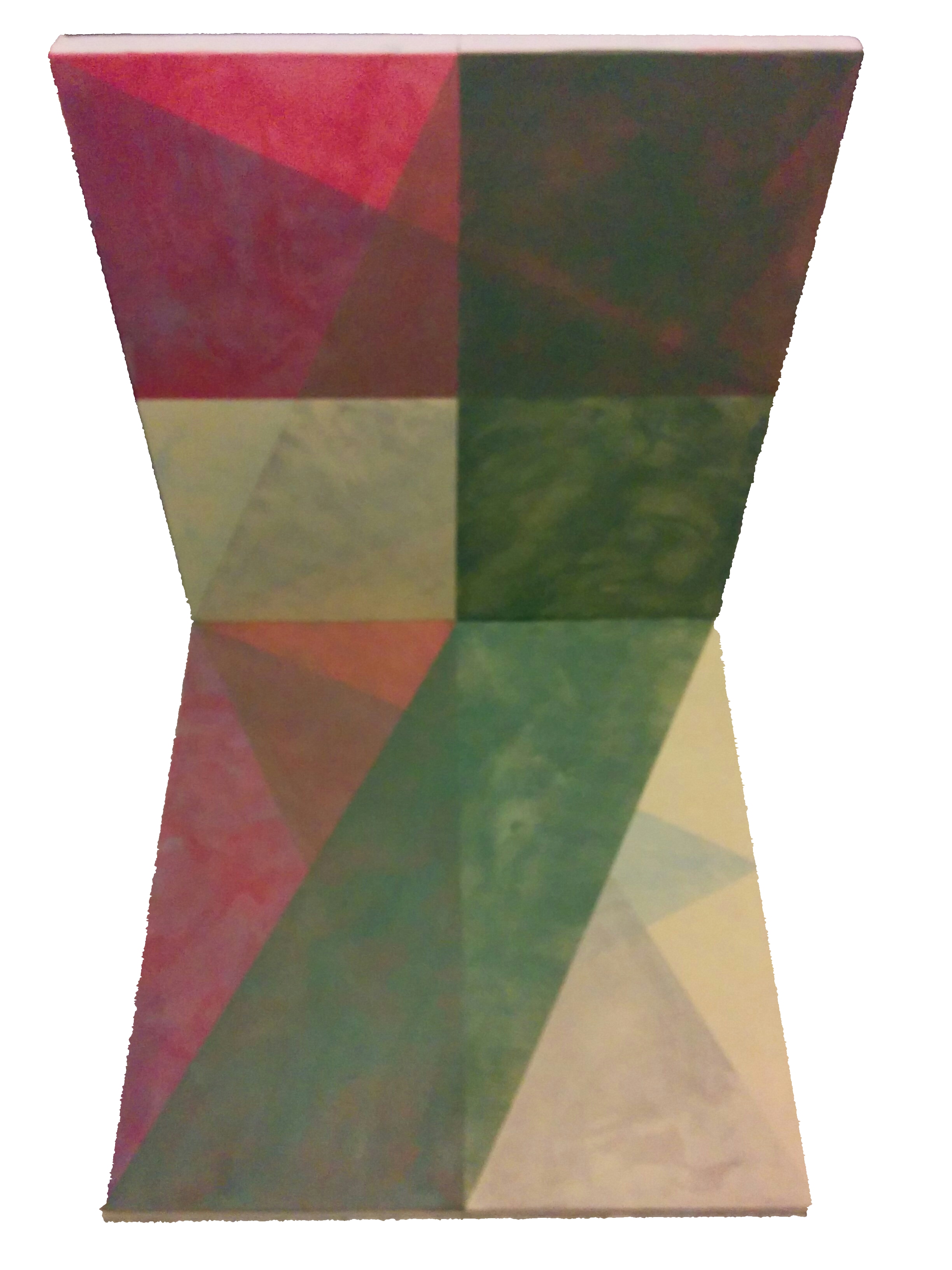 |
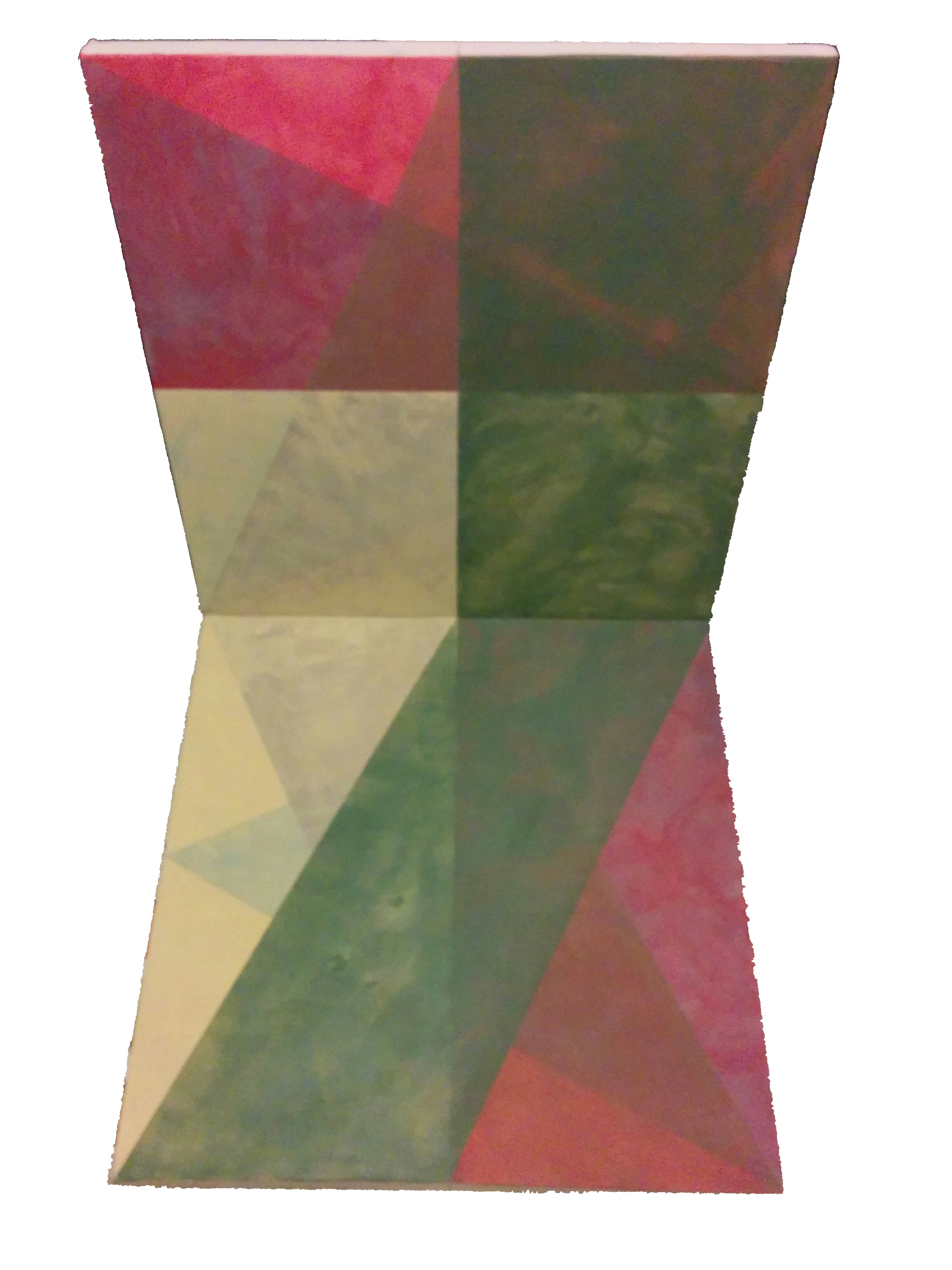 |
The Reactive Canvas
We experience synaesthetics every day. People speak while you see, you listen to music while you walk and while you walk you keep yourself in balance and react to the surface of the ground. Synaesthetics are deep. Commonly we ignore them.
previous page: over the edge wall to floor to variations This page: over the edge composition wall to wall

Games are multimedia systems. They combine various forms of media to create an experience. But they lack a natural look and feel. They do not smell or taste.
You do not need to balance, to get in touch, to act.
A canvas is a haptic thing. You can touch it, you can look at it, you can read it.
It is present. Nothing is emulated. It is a physical part of our environment, a physical, but also mindful representation of our nature.
Building a reactive canvas required utilizing both hard- and software. It is a classic canvas in a square format with the minimal height of 4 cm. In combination with the relatively new technologies, emitting light, sound, communicating via WIFI measuring distance with Bluetooth and position data with an internal compass and a g-sensor this canvas can react on the handling of active audience. In short the canvas is a wrapper for an android tablet pc.
Combining the pursuit of abstract art with modern technology to create a richer media experience for the observer.
Let the spectator be a reactor instead.
True art is the created in the mind of your audience.
A reactive canvas is both: A canvas for painting and a input device.
Breaking The Frame
The technical parts:
-
General: What is the synaesthetic approach of this artwork? Synopsis. Why do I choose this setting? Hypothesis: Synaesthetic art can be composed like classic or abstract art and sound shape or music. Is a sculpture in a public space synaesthetic per se?
-
System setting: You have 3 canvases/devices on 4 positions. So in any arrangement, linear or square, one position is not taken always. A canvas/device is build by a canvas and a cheap android tablet pc. Recommendations: Android 4.4 with Bluetooth 4.0 and WIFI. A single canvas 40x40x4cm or 60x60x4cm. In a group of canvases a single one must have the the same size. Some rules: The canvas hangs on a long side, but not on the corner, not over edge.
change one at a time ⇒
You can rotate any canvas at any time.
You can relocate any canvas to a free position at any time.
You can do both with the one chosen canvas at the same time. A canvas/device can have 4 rotation states. A canvas/device reflects its rotation state through its visible state, the painting, and it’s acoustic state, which might be the beat, the volume, the altitude, frequency, waveform and/or any other modulation.
Each canvas tells the other devices about it’s current state.
So they might react acoustically or even visual - the devices can emit background light.
On a line the might be a stand-alone position. How shall the system react on this? with: a field call - less but louder, hysterical, getting quiet or …?
May each device react differently or predictively the same way? Drawings of the single figures here, some possible examples of combinations, the rules of painting according to the rules for perception. the full documentation of the making of the paintings.
-
Canvas painting: Drawings of the single figures here, some possible examples of combinations, the rules of painting according to the rules for perception. the full documentation of the making of the paintings.
-
Sound generation: What sounds do I use and why, if I can say this. I think this is the most experimental part.
-
Software development: The specifications and nice to have wish-list. Rotation on the wall: -nice to have: rotation on the bottom(floor), but this is way much more complicated (or needs a compass). Bluetooth connections: Identify and connect the devices. Determine position: Do we need 4/5 or 7 bt emitters - 3 devices and 1/2 or 4 Eddystone tokens? This question has been answered by the usage of an javascript BLE and WIFI token. Earlier versions used cheap mobiles with bluetooth and WLan.
-
Interaction of the body and the mind… What is about smell and/or taste?
The CV About
kickstarter page break in the frame